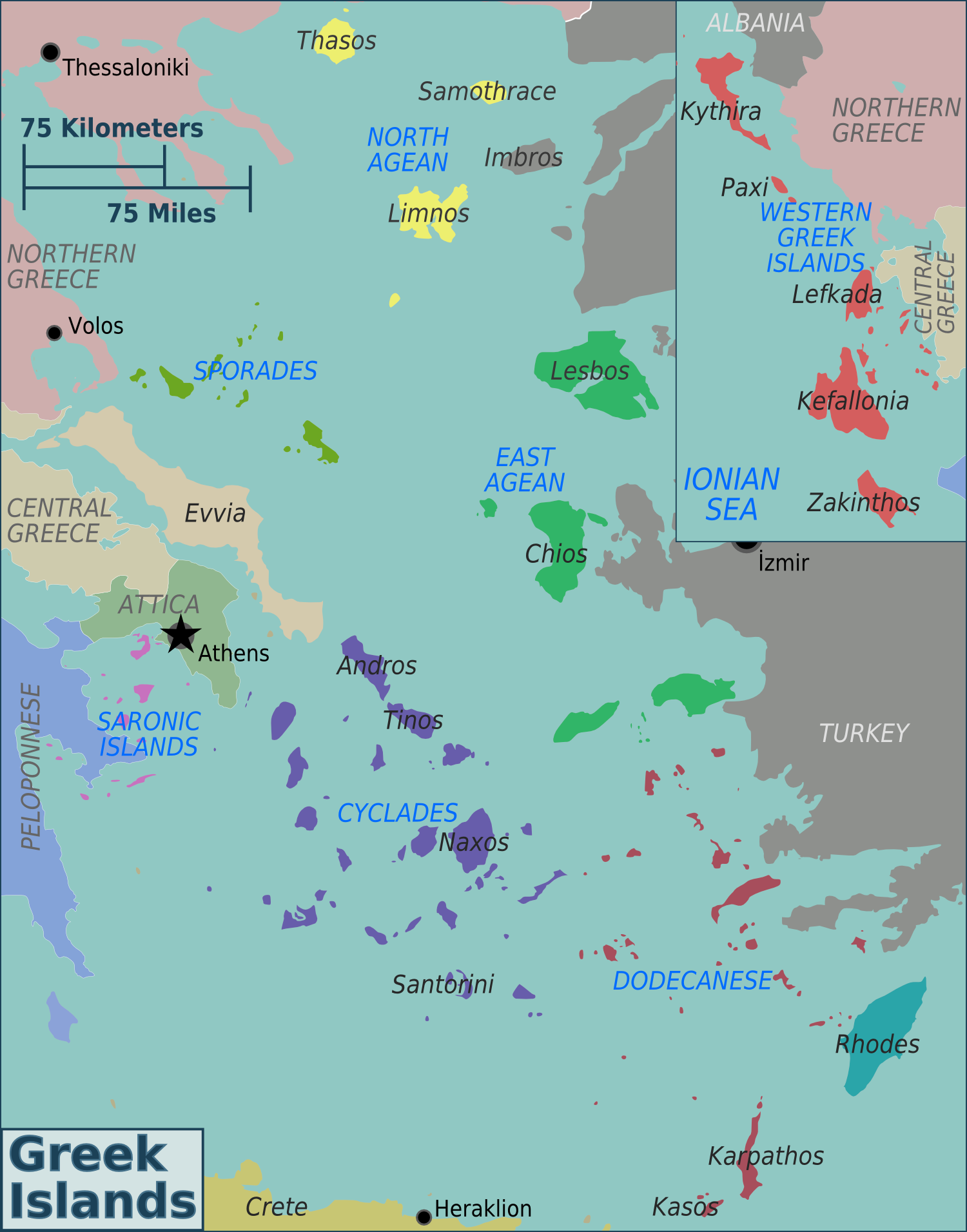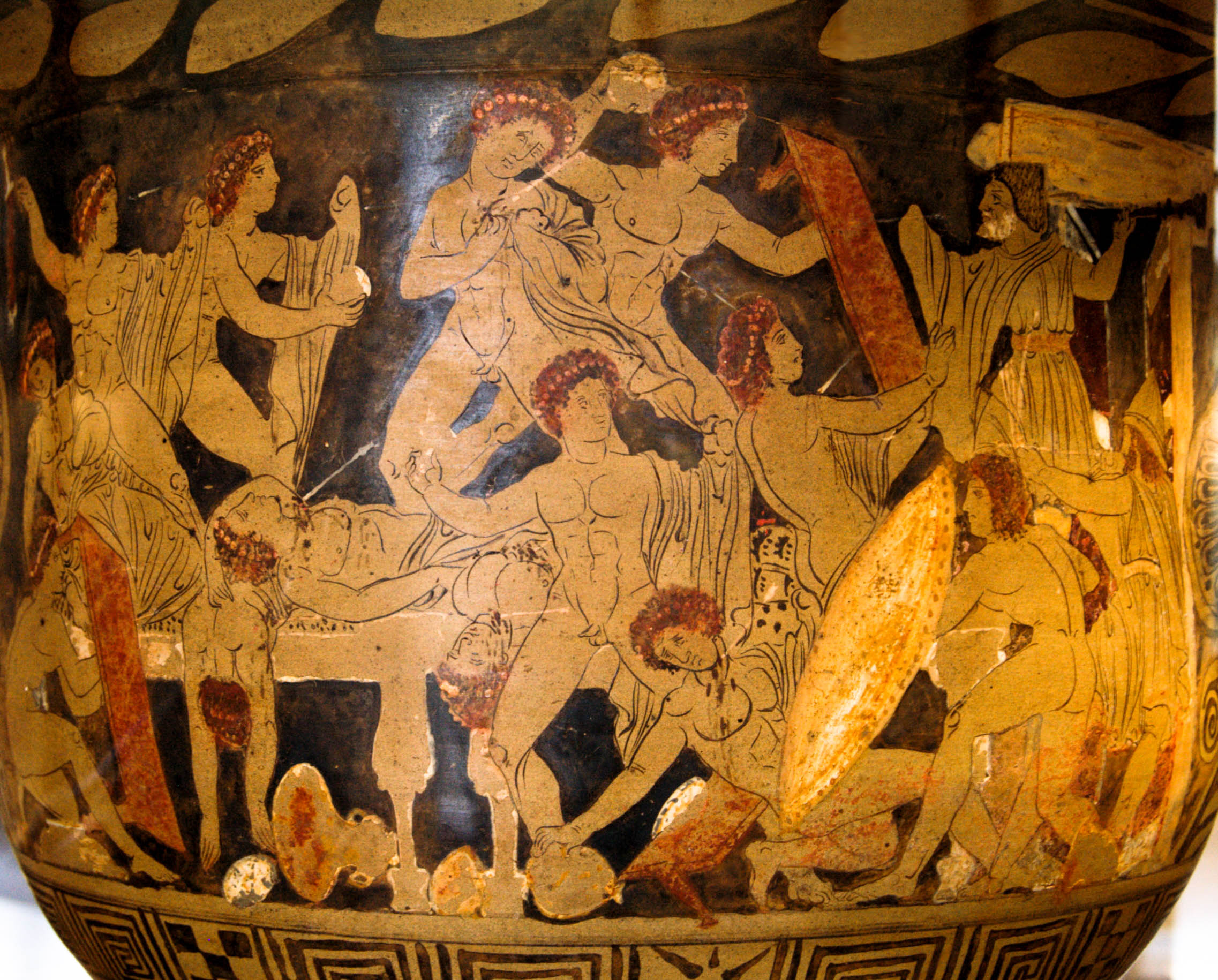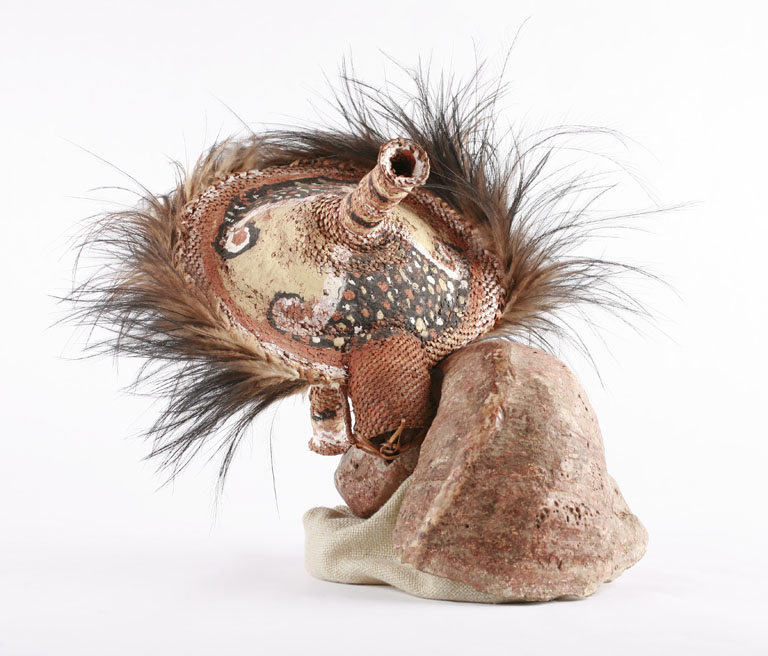|
Same (ancient Greece)
Same (; ), also Samos (Σάμος), is an Ancient Greek name of a Homeric island in the Ionian Sea, near Ithaca and Cephalonia. In Homer's ''Odyssey'' Same is described as part of Odysseus's kingdom together with Ithaca, Dulichium, and Zacynthus. The ''Iliad'', book II, in the Catalogue of Ships, contains a different list of islands comprising Odysseus's kingdom. Same is included together with Ithaca, Neritum, Krocylea, Aegilips and Zacynthus, indicating that the "Catalogue of Ships" could be a later addition to the ''Iliad''. In Homer's ''Odyssey'', there is an interesting geographical description: From the above passage, Homer's Same is not the Greek island Samos in the Eastern Aegean Sea, Same should be in the Ionian Sea, near Homer's Ithaca and there should be at least one rocky island between the two islands. Also, this rocky island should be located South of Homer's Ithaca where Telemakhos would arrive from South-West Peloponnese The Peloponnese ( ), Peloponne ... [...More Info...] [...Related Items...] OR: [Wikipedia] [Google] [Baidu] |
Ancient Greek
Ancient Greek (, ; ) includes the forms of the Greek language used in ancient Greece and the classical antiquity, ancient world from around 1500 BC to 300 BC. It is often roughly divided into the following periods: Mycenaean Greek (), Greek Dark Ages, Dark Ages (), the Archaic Greece, Archaic or Homeric Greek, Homeric period (), and the Classical Greece, Classical period (). Ancient Greek was the language of Homer and of fifth-century Athens, fifth-century Athenian historians, playwrights, and Ancient Greek philosophy, philosophers. It has contributed many words to English vocabulary and has been a standard subject of study in educational institutions of the Western world since the Renaissance. This article primarily contains information about the Homeric Greek, Epic and Classical periods of the language, which are the best-attested periods and considered most typical of Ancient Greek. From the Hellenistic period (), Ancient Greek was followed by Koine Greek, which is regar ... [...More Info...] [...Related Items...] OR: [Wikipedia] [Google] [Baidu] |
Aegean Sea
The Aegean Sea is an elongated embayment of the Mediterranean Sea between Europe and Asia. It is located between the Balkans and Anatolia, and covers an area of some . In the north, the Aegean is connected to the Marmara Sea, which in turn connects to the Black Sea, by the straits of the Dardanelles and the Bosphorus, respectively. The Aegean Islands are located within the sea and some bound it on its southern periphery, including Crete and Rhodes. The sea reaches a maximum depth of 2,639 m (8,658 ft) to the west of Karpathos. The Thracian Sea and the Sea of Crete are main subdivisions of the Aegean Sea. The Aegean Islands can be divided into several island groups, including the Dodecanese, the Cyclades, the Sporades, the Saronic Islands, Saronic islands and the North Aegean islands, North Aegean Islands, as well as Crete and its surrounding islands. The Dodecanese, located to the southeast, includes the islands of Rhodes, Kos, and Patmos; the islands of Delos and Naxos are wi ... [...More Info...] [...Related Items...] OR: [Wikipedia] [Google] [Baidu] |
Islands Of Greece
Greece has many islands, with estimates ranging from somewhere around 1,200 to 6,000, depending on the minimum size to take into account. The number of inhabited islands is variously cited as between 166 and 227. The largest Greek island by both area and population is Crete, located at the southern edge of the Aegean Sea. The second largest island in area is Euboea or Evvia, which is separated from the mainland by the 60m-wide Euripus Strait, and is administered as part of the Central Greece (administrative region), Central Greece region. After the third and fourth largest Greek islands, Lesbos and Rhodes, the rest of the islands are two-thirds of the area of Rhodes, or smaller. The Greek islands are traditionally grouped into the following clusters: the Argo-Saronic Islands in the Saronic Gulf near Athens; the Cyclades, a large but dense collection occupying the central part of the Aegean Sea; the North Aegean islands, a loose grouping off the west coast of Turkey; the Dodec ... [...More Info...] [...Related Items...] OR: [Wikipedia] [Google] [Baidu] |
Geography Of The Odyssey
The locations mentioned in the narratives of Odysseus's adventures have long been debated. Events in the main sequence of the ''Odyssey'' take place in the Peloponnese and in what are now called the Ionian Islands (Ithaca (island), Ithaca and its neighbours). There are also incidental mentions of Troy and its house, Phoenicia, Egypt, and Crete, which hint at a geographical knowledge equal to, or perhaps slightly more extensive than that of the ''Iliad''. The places visited by Odysseus in his journey have been variously identified with locations in Greece, Italy, Tunisia, the Maltese archipelago, and the Iberian peninsula. However, scholars both ancient and modern are divided whether any of the places visited by Odysseus (after Ismara, Ismaros and before his return to Homer's Ithaca, Ithaca) were real. Many ancient writers came down squarely on the skeptical side; Strabo reported what the great geographer Eratosthenes had said in the late 3rd century BC: "You will find the scene of ... [...More Info...] [...Related Items...] OR: [Wikipedia] [Google] [Baidu] |
Heidelberg University
Heidelberg University, officially the Ruprecht Karl University of Heidelberg (; ), is a public research university in Heidelberg, Baden-Württemberg, Germany. Founded in 1386 on instruction of Pope Urban VI, Heidelberg is Germany's oldest university and one of the world's oldest surviving universities; it was the third university established in the Holy Roman Empire after Prague (1347) and Vienna (1365). Since 1899, it has been a coeducational institution. Heidelberg is one of the most prestigious universities in Germany. It is a German Excellence University, part of the U15, as well as a founding member of the League of European Research Universities and the Coimbra Group. The university consists of twelve faculties and offers degree programmes at undergraduate, graduate and postdoctoral levels in some 100 disciplines. The language of instruction is usually German, while a considerable number of graduate degrees are offered in English as well as some in French. 57 Nobel ... [...More Info...] [...Related Items...] OR: [Wikipedia] [Google] [Baidu] |
Ctesippus
:''The name Ctesippus may also refer to a character in Plato's Euthydemus and Lysis, and to a historical figure, see Leptines and Against Leptines.'' In Greek mythology, the name Ctesippus (; Ancient Greek: Κτήσιππος means 'possessing horses') may refer to: *Ctessipus, son of Heracles by Deianira.Apollodorus, 2.7.8 He was the father of Thrasyanor, grandfather of Antimachus and great-grandfather of Deiphontes. Thersander, son of Agamedidas, is also given as his great-grandson. *Ctesippus, another son of Heracles by Astydameia the daughter of Amyntor or Ormenius. *Ctessipus, two of the suitors of Penelope, one from Same, and the other from Ithaca. The rich and "lawless" Ctesippus of Same, son of Polytherses, who has 'fabulous wealth' appears in the ''Odyssey''; he mocks the disguised Odysseus and hurls a bull's hoof at him as a 'gift', mocking xenia, though Odysseus dodges this. Telemachus says if he had hit the guest, he would have run Ctesippus through with his s ... [...More Info...] [...Related Items...] OR: [Wikipedia] [Google] [Baidu] |
Suitors Of Penelope
In Greek mythology, the suitors of Penelope (also known in Latin as the ) are one of the main subjects of Homer's ''Odyssey''. Role in the ''Odyssey'' In the ''Odyssey,'' Homer describes Odysseus' journey home from Troy. Prior to the Trojan War, Odysseus was King of Ithaca, a Greek island known for its isolation and rugged terrain. When he departs from Ithaca to fight for the Greeks in the war, he leaves behind a newborn child, Telemachus, and his wife, Penelope. Although most surviving Greek soldiers return shortly after the end of the fighting, Odysseus does not return to Ithaca until ten years after the end of the Trojan War. During Odysseus' long absence, unmarried young men start to suspect that Odysseus died in Troy or on the journey home. Under the pretense of courting Penelope, these youths, called "the suitors", take up residence in Odysseus' home and vie for her hand in marriage. Rather than simply rejecting the suitors, Penelope devises a plan to delay their courts ... [...More Info...] [...Related Items...] OR: [Wikipedia] [Google] [Baidu] |
Bride Price
Bride price, bride-dowry, bride-wealth, bride service or bride token, is money, property, or other form of wealth paid by a groom or his family to the woman or the family of the woman he will be married to or is just about to marry. Bride dowry is equivalent to dowry paid to the groom in some cultures, or used by the bride to help establish the new household, and dower, which is property settled on the bride herself by the groom at the time of marriage. Some cultures may practice both simultaneously. Many cultures practiced bride dowry prior to existing records. The tradition of giving bride dowry is practiced in many East Asian countries, Eastern Europe, the Middle East, parts of Africa and in some Pacific Island societies, notably those in Melanesia. The amount changing hands may range from a token to continue the traditional ritual, to many thousands of US dollars in some marriages in Thailand, and as much as $100,000 in exceptionally large bride dowry in parts of Papua New G ... [...More Info...] [...Related Items...] OR: [Wikipedia] [Google] [Baidu] |
Eurylochus (mythology)
In Greek mythology, Eurylochus (; Ancient Greek: Εὐρύλοχος ''Eurúlokhos'') appears in Homer's ''Odyssey'' as second-in-command of Odysseus' ship during the return to Ithaca after the Trojan War. He is portrayed as an unpleasant, cowardly individual who undermines Odysseus and stirs up trouble. Family Eurylochus was from the island of Same near Ithaca. He was the husband of Odysseus's sister, Ctimene. Mythology When Odysseus and 12 of his crew, including Eurylochus, came into the port of Sicily, the Cyclops Polyphemus seized and confined them. Along with the Ithacan king and six others namely: Lycaon, Amphialos, Alkimos, Amphidamas and Antilochus, Eurylochus survived the manslaughter of his six companions by the monster. When the ship stops on Aeaea, home of Circe the goddess-sorceress, daughter of the sun god Helios and the Oceanid nymph Perse, Eurylochus and Odysseus draw lots to lead a group of twenty-two men to explore the island. Eurylochus is chosen. Af ... [...More Info...] [...Related Items...] OR: [Wikipedia] [Google] [Baidu] |
Ctimene
In Greek mythology, Ctimene ( ; , ) was an Ithacan princess as the daughter of King Laertes and Anticlea, and wife of Eurylochus. Family Ctimene was the younger sister of Odysseus, the legendary king of Ithaca and is the wife of Eurylochus. Mythology Ctimene was raised by her parents alongside the servant Eumaeus who was treated almost as her equal. She was married off to Eurylochus of Same for a massive bride price.Homer, ''Odyssey'' 15.365–367 Her husband accompanied Odysseus on his journey from Troy but, like all of Odysseus's men, died before reaching home. Notes References * ''Odyssey'', 15.361–379. *Homer Homer (; , ; possibly born ) was an Ancient Greece, Ancient Greek poet who is credited as the author of the ''Iliad'' and the ''Odyssey'', two epic poems that are foundational works of ancient Greek literature. Despite doubts about his autho ..., ''The Odyssey'' with an English Translation by A.T. Murray, PH.D. in two volumes. Cambridge, MA., Harva ... [...More Info...] [...Related Items...] OR: [Wikipedia] [Google] [Baidu] |
Erissos
Akanthos (; ) was an ancient Greek city on the Athos peninsula, on the narrow neck of land between the sacred mountain and the mainland, to the northwest of the Xerxes Canal. It was founded in the 7th century BCE as a colony of Andros, itself a colony of Chalcis in Euboea. Chalcidice was multi-cultural. The archaeology of the region suggests that some Hellenes were already there. The site is on the north-east side of Akti, on the most eastern peninsula of Chalcidice. The ancient city extended along a ridge comprising three hills bordering the south-east of modern Ierissos about from it. The ridge dominates the landscape. It is terminated on the north by the coastal road (Vasileos Konstantinou) and the beach between Ierissos and its harbor. The modern city is about equal in size to the ancient site, which is now partially wooded. Remains of an high circuit wall, a citadel, and Hellenistic buildings are visible embedded in the terrain, along with a deserted Byzantine church and ... [...More Info...] [...Related Items...] OR: [Wikipedia] [Google] [Baidu] |






